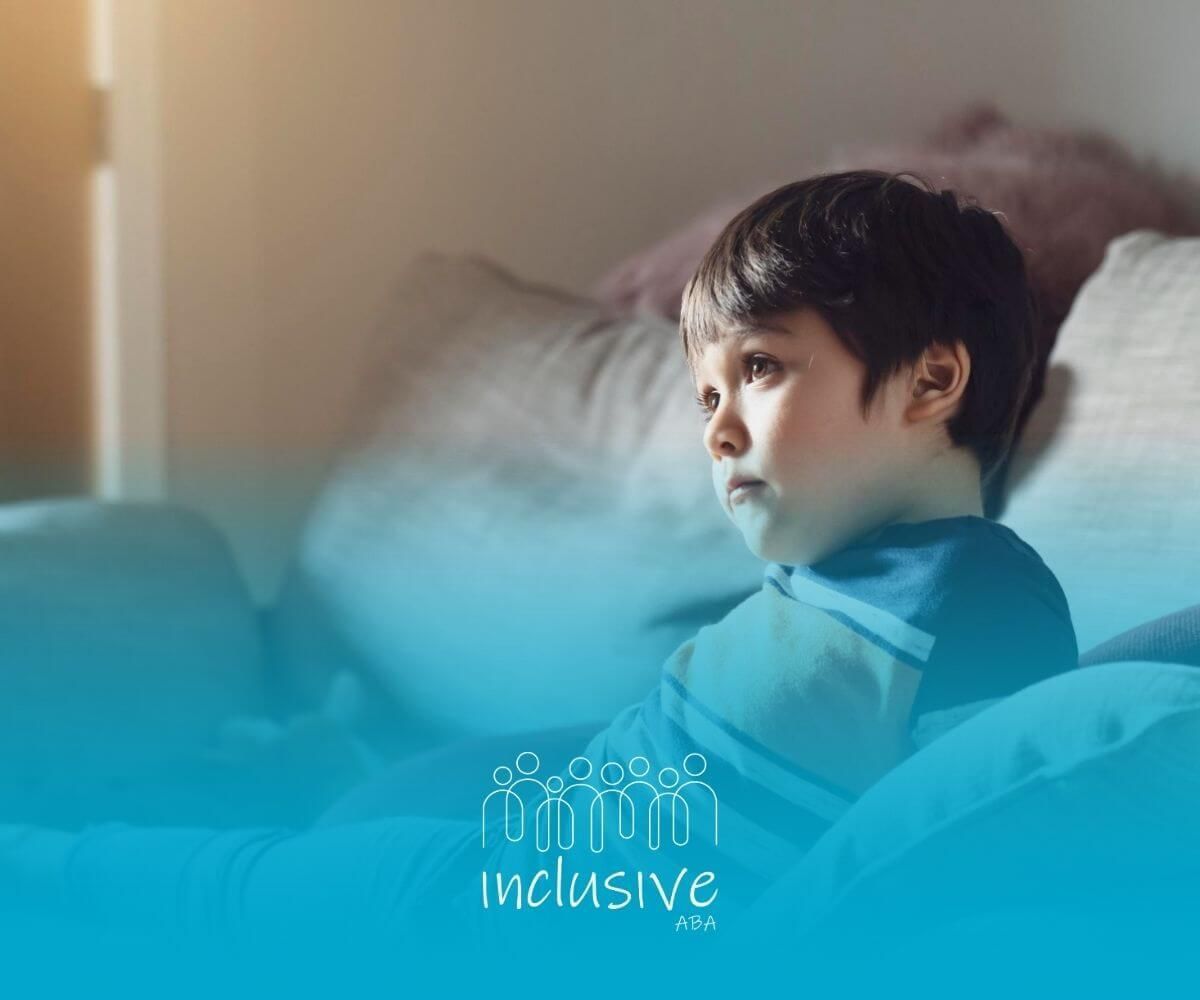How to Deal with Tantrums
Applied Behavior Analysis (ABA) therapy is widely recognized for its effectiveness in addressing challenging behaviors in children with autism spectrum disorder (ASD). Tantrums, a common characteristic of this neurodevelopmental condition, can be particularly distressing for both the child and their caregivers. This blog post aims to shed light on effective ABA strategies for dealing with tantrums in children on the autism spectrum.
Understanding the Nature of Tantrums in ABA Therapy
It's important to understand that tantrums are a form of communication for children, especially those on the autism spectrum. Unlike neurotypical children who can verbally express their needs and frustrations, children with ASD may struggle with communication, leading to outbursts and tantrums as a way to communicate their needs.
In ABA therapy, tantrums are not viewed as simply "bad behavior," but rather as outward expressions of unmet needs or an inability to cope with a particular situation. ABA seeks to understand the function, or the "why," behind a tantrum. By identifying the triggers, we can develop effective strategies to prevent and manage these behaviors.
What Triggers Tantrums in Children Undergoing ABA?
Several factors can trigger tantrums in children undergoing ABA therapy, and recognizing these triggers is often the first step in managing them. One common trigger is sensory overload. Many children with autism spectrum disorder have sensory sensitivities, and environments with excessive noise, bright lights, or strong smells can overwhelm them, leading to a temper tantrum.
Another common trigger is a change in routine. Children with ASD thrive on predictability and structure, and any sudden changes can be disruptive and anxiety-provoking, potentially leading to outbursts. It's vital for parents and therapists to be mindful of these sensitivities and make adjustments to the child's environment or routine to minimize potential triggers.
Lastly, difficulties with communication can be a significant contributor to tantrums. Trying to express a need or want but being unable to communicate effectively can be incredibly frustrating for a child, leading to a meltdown. Teaching children alternative ways to communicate, such as sign language or using picture cards, can help mitigate frustration and reduce tantrums.
Differentiating Between Tantrums and Meltdowns
While the terms "tantrum" and "meltdown" are often used interchangeably, they represent distinct behavioral patterns. A tantrum, typically observed in younger children, is a behavioral response to frustration, anger, or a desire for attention. These are often a means of getting something they want or avoiding something undesirable. Tantrums can range in severity but generally involve behaviors like crying, screaming, kicking, or dropping to the floor.
A meltdown, in contrast, is a more intense and overwhelming experience for the child. Meltdowns are often triggered by sensory overload, anxiety, or an inability to cope with a change in routine. They may appear similar to tantrums in terms of outward behaviors but are marked by a loss of emotional control that the child struggles to regulate independently. Understanding the difference between a tantrum and a meltdown is essential in responding appropriately.
Furthermore, consider the duration and intensity. Tantrums tend to be short-lived, diminishing once the child receives the desired outcome or is distracted. Meltdowns, however, can last much longer and involve intense emotional and physical discomfort for the child. Recognizing these differences helps caregivers implement appropriate strategies, offering comfort and support during a meltdown rather than attempting to reason or negotiate.
Core ABA Techniques to Manage Tantrums
ABA therapy equips parents and therapists with a range of techniques to manage tantrums effectively, focusing on understanding the function of the behavior and implementing strategies to modify it. By employing techniques like antecedent manipulation, structured schedules, and positive reinforcement, ABA provides a framework for promoting positive behavior change.
Beyond managing tantrums as they occur, ABA emphasizes the importance of teaching alternative, more appropriate behaviors. This could include functional communication training, helping the child learn to express their needs and wants in more appropriate ways, or teaching coping mechanisms for dealing with frustration or sensory overload.
The Role of Antecedent Manipulation
Antecedent manipulation, a cornerstone of ABA therapy techniques, proves highly effective in managing tantrums by addressing the triggers before they escalate. It involves identifying and modifying the environmental or situational factors that precede a tantrum. For instance, if a child consistently throws a tantrum when asked to transition from a preferred activity, a therapist might introduce a visual timer to provide a predictable end time, minimizing resistance.
Moreover, offering choices can empower the child and reduce the likelihood of tantrums. By allowing the child to select between two acceptable options, such as choosing between two different toys or activities, they experience a sense of control and are less likely to engage in challenging behaviors. Distractions, when used strategically, can also de-escalate a building tantrum.
Implementing Structured Schedules for Predictability
Creating and implementing structured schedules is another effective ABA strategy for managing tantrums, particularly in children with ASD who thrive on predictability and routine. A visual schedule, using pictures or symbols, can clearly depict the sequence of events throughout the day. This visual aid minimizes anxiety by preparing the child for what's to come, reducing the likelihood of meltdowns triggered by unexpected changes.
Consistency is key when using visual schedules. For instance, in a school setting, a visual schedule might outline the order of activities, such as circle time, snack time, playtime, and work time, using clear images. Consistent use of the schedule helps the child anticipate transitions, reducing resistance and promoting cooperation.
| Time | Activity |
|---|---|
| 9:00 AM | Circle Time |
| 9:30 AM | Snack Time |
| 10:00 AM | Playtime |
| 10:30 AM | Work Time |
| 11:00 AM | Outdoor Play |
Effective Use of Positive Reinforcement
Positive reinforcement is a powerful tool for increasing desired behaviors and decreasing problem behaviors, including tantrums. It involves immediately rewarding the child for exhibiting positive behavior, making them more likely to repeat that behavior. Conversely, when tantrums or other problem behaviors occur, withholding reinforcement can help reduce their frequency.
When a child engages in positive behavior, such as using their words to express frustration or calmly transitioning to a new activity, offering specific praise, a small toy, or a sticker can reinforce that behavior. By focusing on the desired behavior, rather than punishing the tantrum, we create a positive learning environment where children feel motivated to make good choices.
Practical Tips for Parents and Therapists
While ABA therapy offers a framework for managing tantrums, implementing these strategies in real-life situations requires practical knowledge and a toolbox of techniques. Here are some practical tips for parents and therapists to handle tantrums effectively and foster a positive environment.
First and foremost, it's essential to approach tantrum behavior with empathy and understanding. Tantrums are not simply a form of manipulation; they are a child's way of communicating distress or unmet needs.
Transition Strategies to Minimize Outbursts
Parents and therapists can employ proactive transition strategies to minimize the likelihood of outbursts during specific transitions, especially for children who are particularly sensitive to change. These strategies aim to smooth out potentially jarring shifts in routine, helping the child adapt to the new setting or activity more easily.
One effective strategy is to provide warnings before a transition. For instance, when leaving the playground, a parent might give the child a five-minute warning, followed by a two-minute warning, allowing them time to mentally prepare for the transition. Also, incorporating visual aids, such as a countdown timer, can make the transition more concrete and less anxiety-provoking. Creating a visual schedule depicting the steps involved in a specific transition, like getting ready for bed or transitioning from the home environment to school, gives the child a sense of control and predictability.
Communication Tips: How to Talk to Your Child During a Tantrum
Communicating effectively with a child during a tantrum can be challenging, especially if they have limited communication skills. However, how we communicate during these moments can either escalate or de-escalate the situation. Rather than immediately trying to reason with a child in the midst of a tantrum, focus on creating a sense of safety and security.
Lower your voice, using a calm and soothing tone to avoid further overwhelming the child. Simple phrases like, "It's okay to be upset; I'm here for you," can convey empathy and support. Remember that tantrums often stem from underlying reasons: frustration, anxiety, or sensory overload. While it might be tempting to dismiss the child's feelings during a tantrum situation, acknowledging their emotions validates their experience and helps build trust.
Conclusion
In conclusion, understanding the triggers and nature of tantrums is crucial in ABA therapy. By implementing core ABA techniques like antecedent manipulation, structured schedules, and positive reinforcement, parents and therapists can effectively manage tantrums. Practical tips such as transition strategies and effective communication play a key role in minimizing outbursts and supporting children undergoing ABA therapy. With patience, consistency, and a tailored approach, tantrums can be addressed positively, fostering growth and progress in children's behavioral development.
At Inclusive ABA, serving families in Nevada, Nebraska, and Colorado, we understand that managing tantrums can be a significant challenge. This article explores effective, evidence-based ABA strategies for understanding and addressing these behaviors in children with autism. Our experienced clinicians at Inclusive ABA utilize these techniques to develop individualized behavior intervention plans that focus on identifying triggers, teaching replacement skills, and promoting positive communication. We empower parents and caregivers with the tools and knowledge to effectively navigate challenging moments, fostering a more harmonious and supportive environment for children to thrive in Nevada, Nebraska, and Colorado.
Source:
https://www.autismspeaks.org/applied-behavior-analysis
https://acornhealth.com/blog/aba-techniques-for-tantrums/
https://raisingchildren.net.au/autism/learning-about-autism/about-autism/asd-overview
https://www.autismparentingmagazine.com/autism-meltdowns/
https://autismtreatmentcenter.org/knowledge-base/the-difference-between-meltdowns-and-tantrums/
Looking for Expert Help? We're Here for You!
Our compassionate and skilled team is devoted to enhancing your child's development through customized ABA therapy. Let us partner with you to create a supportive environment for your child's success.
Discover how we can help your family thrive with expert ABA therapy.
Related Posts







